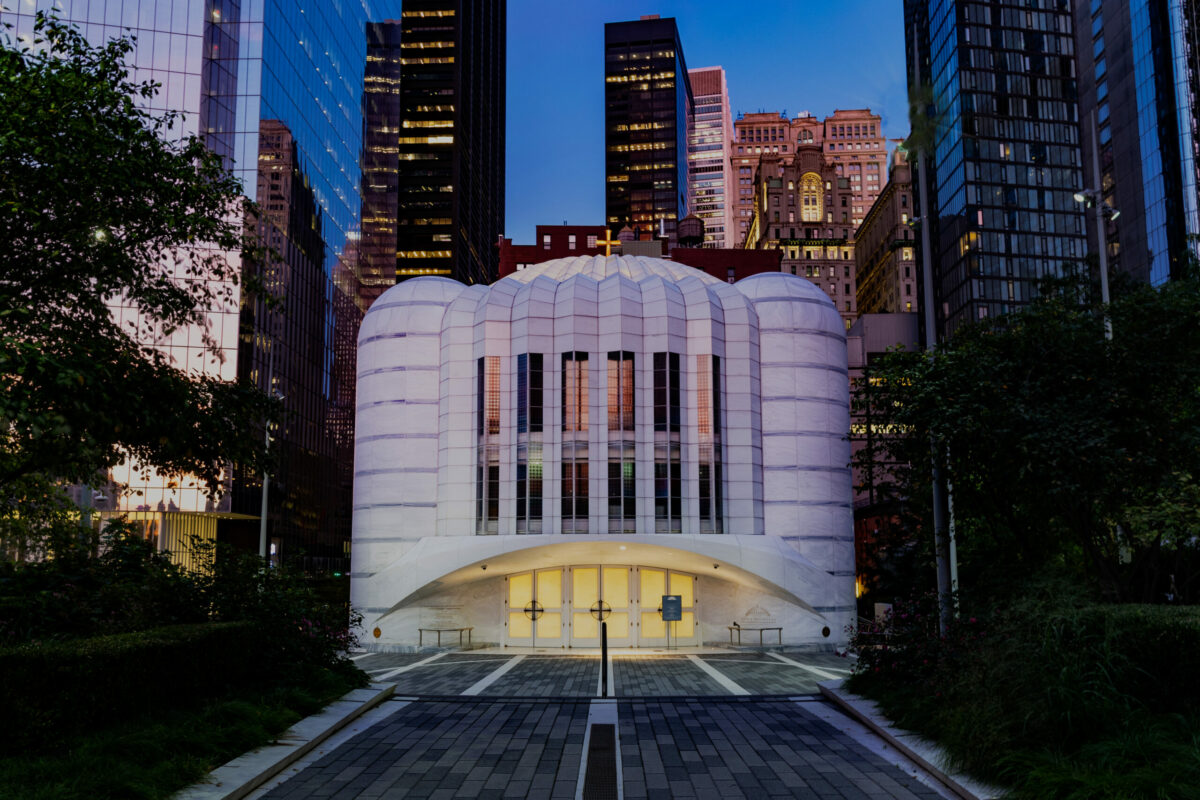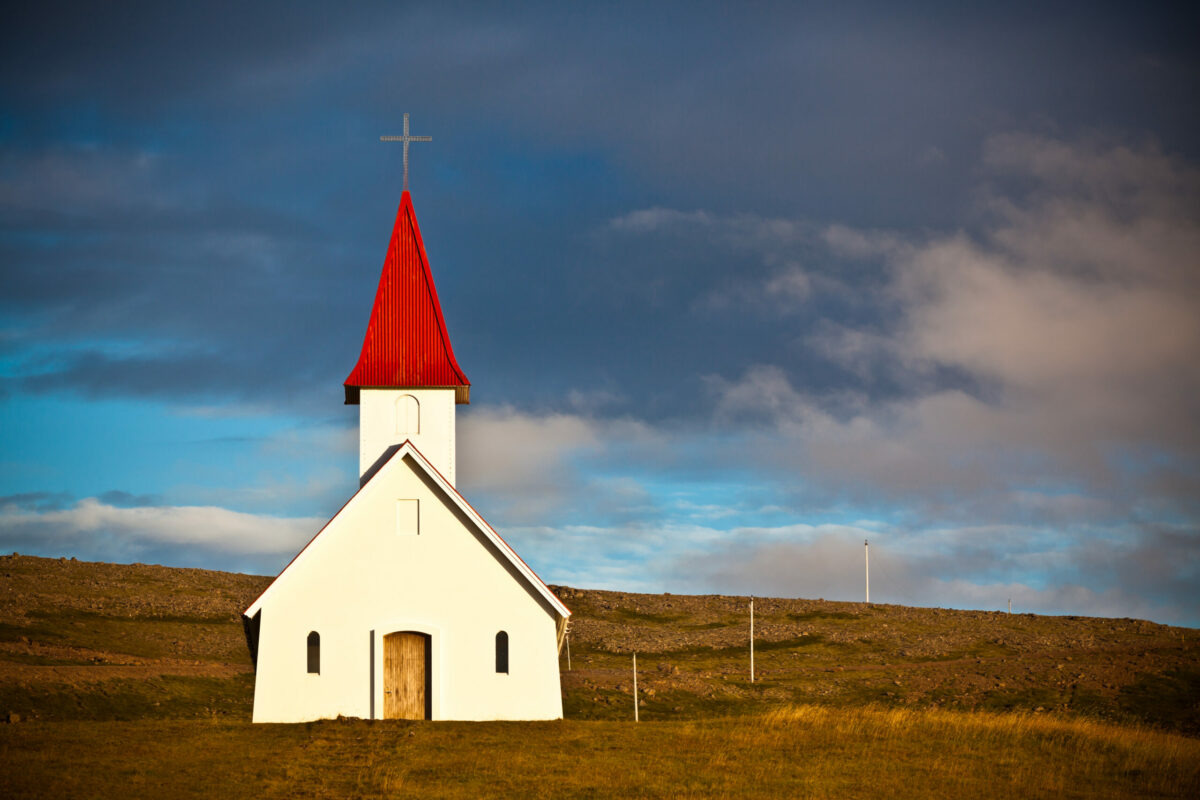Art plus spirituality and religious faith can make for a transforming experience. Where can one find artist-designed houses of worship, though? Here are some of the most beautiful and famous artist-designed chapels in the world.
is an artist-designed chapel a sacred space? or just another kind of museum?
Religious faith, spirituality and art have been inextricably intertwined for many throughout the ages. But sometimes an artist is moved – or commissioned – to create an actual house of worship.
Are these artist-designed chapels sacred places? Or secular? Some have been consecrated, and others have deliberately not been. Some were created by Christian artists, others by those of other faiths, and some by outspoken atheists.
The origin stories behind these chapels are almost as fantastical as the ultimate works themselves. Chance meetings, favors for old friends, the revival of a dormant idea that’s two decades old. Funding provided by wealthy and sometimes eccentric patrons whose motives are not always clear.
How did all of these actually get built? It kind of makes you believe in miracles, actually.

Where are the most beautiful and famous artist-designed chapels in the world? St. Nicholas Greek Orthodox Church, New York. Photo Credit: Pamela Thomas-Graham.
We were also struck by the poignancy that many of these chapels are the final works of their designers, created when they were sick or dying. At least one artist did not live to see his work completed. These artist-designed chapels stand as the culmination of a life’s work in many cases, making them even more iconic.
So what are to make of it all? Are these artist-designed chapels just a different kind of museum? Or something altogether different?
Like a labyrinth, an artist-designed chapel could mean many things simultaneously to the spirits and hearts of those who visit. The vibe within each of them runs the gamut from the showy to the spiritual, and everything in-between. With that in mind, we decided to investigate how many of these works exist, and where one might find them.
exquisite beauty: 17 most beautiful artist-designed chapels in the world
Some people feel that visiting an art museum is a spiritual or even religious experience. While others would find that odd, or perhaps even objectionable. No matter where you land on that spectrum, you might find that a visit to one of these artist-designed chapels is just what is needed to restore your sense of purpose, gratitude and wonder.
With thanks and credit to The Art Newspaper, the New York Times, The Wall Street Journal, Artsy and Architectural Digest, here are 17 of the best, most intriguing and fanciful artist-designed chapels of note in the world.
1. The Sistine Chapel, Vatican City, Rome
It seems appropriate to begin our list with the best-known, and one of the most beautiful, of all artist-designed chapels in the world. Michelangelo put the finishing touches on the sprawling ceiling of the Sistine Chapel, a Renaissance masterpiece, in 1512.
While many others worked on other parts of the Chapel, which was built between 1477 and 1480 by Pope Sixtus IV, Michelangelo painted the ceiling and the the fresco depicting the Last Judgment on the Sanctuary Wall.
No visit to Rome is complete without viewing this masterwork. Sadly, it’s unlikely to be a transforming spiritual experience. If you go on your own, there will be a substantial wait and huge crowds. Even with a private guide, visitors get very little time in the space, and are not allowed to sit (or take photographs). Still, it’s a must-see – and a fitting place to begin thinking about the role of the artist in a sacred space such as this one.
2. The Rothko Chapel, Houston, Texas
The Rothko Chapel was founded by John and Dominique de Menil in 1971 with the intention of creating an ecumenical meditative space for prayer and reflection. Artist Mark Rothko’s hand is obvious in every facet of the octagonal structure; he was intimately involved in all aspects of the Chapel’s inception, design, and architecture.
There are fourteen Rothkos on display at the Chapel; perhaps the most famous is his purple triptych.
3. Nam June Paik’s Sistine Chapel, Tate Modern, London
A wildly different, electronic version of the “Sistine Chapel” touched down in London in 2019. And while it wasn’t as grand as the Renaissance original, the efforts exerted to resurrect Nam June Paik’s 1990’s technological twist on Michelangelo’s masterpiece are still pretty impressive.
The late Korean-American’s “video chapel” was reconstructed for the first time in nearly three decades for a major touring retrospective at Tate Modern.
Last shown at the German pavilion at the 1993 Venice Biennale, Sistine Chapel (1993) is a large-scale installation comprised of 40 video projectors beaming overlapping images of graphics and noted personalities. Including the artist Joseph Beuys and the rock star Janis Joplin.
Only a few grainy photographs of the original installation exist, so the curators put in a Herculean effort to reconstruct it, working closely with the artist’s estate. Technology has advanced so far that many of the projectors and televisions Paik originally used are no longer made. The entire story is remarkable.
4. Ellsworth Kelly’s Austin at the Blanton Museum of Art in Austin, Texas
A beautiful new artist-designed chapel was unveiled in 2018 at the Blanton Museum of Art on the campus of the University of Texas at Austin.
Ellsworth Kelly’s “Austin” is a freestanding cruciform structure with colorful geometric windows that cast light on artworks inside.
In addition to the interiors, Kelly designed the whimsical and joyful structure itself before his death at the age of 92 in 2015.
The space is not consecrated, at the explicit request of the artist. Kelly envisioned it as a serene place where visitors can “rest your eyes, rest your mind.” Mission accomplished.
5. Theaster Gates, Sanctum, 2015, Temple Church, Bristol, United Kingdom
One of the most stunning artist-designed chapels was an ephemeral work by Chicago artist Theaster Gates. In the autumn of 2015 a temporary structure rose within the remaining shell of the 14th century Temple Church in Bristol, England.
Gates sought out discarded and dormant materials from former places of physical labor and religious devotion across the city. Entitled Sanctum, the artist invited musicians and performers across Bristol to sustain a performance of sound and spoken word continuously for 24 days, 24 hours a day.
Sanctum was open to visitors day and night, with a secret schedule so that visitors never knew what they’d find there. The sponsors of the project note that it “tested how future spaces of contemplation might supersede the sanctuaries of the past.”
6. Louise Nevelson’s Chapel at St. Peter’s Lutheran Church, Manhattan
In 1977, American artist Louise Nevelson designed a chapel at St. Peter’s Lutheran Church, in the middle of the bustling and highly secular midtown area in Manhattan. The late sculptor – who was herself of the Jewish faith – employed wood, white paint, and gold leaf to create a serene and spiritual space.
The Chapel of the Good Shepherd is currently undergoing a multi-year restoration. As of this posting, it is not open to the public.
7. Stefan Strumbel, Goldscheuer, Germany
Street artist Stefan Strumbel met with the priest of a local church to get advice on the religious symbols he planned to use in his work. That conversation led to Strumbel accepting a commission to redesign the interior of the then-dilapidated 1960’s-era parish.
Now, with spray paint and LEDs, a vintage crucifix glows and radiates pink light. And a 20-foot-high graphic-novel-style Madonna and Child mural greets visitors.
8. James Turell, Dorotheenstädtischer Cemetery Chapel, Berlin
At the Dorotheenstädtischer Cemetery Chapel in Berlin, a permanent light-changing installation by James Turrell illuminates both the exterior and interior. The circa-1920’s chapel contains an altar and pews for visitors. Turrell, who is a Quaker, redesigned the space starting in late 2016.
As the sun sets, a glowing royal blue light illuminates the space, and then changes color every two minutes for an entire hour. After the program is over, the church remains aglow in the darkened cemetery.
9. Louis Tiffany, Willard Memorial Chapel, Auburn, New York
Located in Auburn, New York, the 1890s-built Willard Memorial Chapel is the one of the only known complete and unaltered religious interiors designed by artist Louis Tiffany.
A designated National Historic Landmark, the Romanesque Revival structure contains 14 opalescent windows, a rose window, and a large figure window. There are also nine Moorish-style glass chandeliers; mosaic-inlaid furniture, and a gold-leaf–stenciled ceiling.
10. Henri Matisse’s Chapelle du Rosaire de Vence, France
Henri Matisse designed the Chapelle du Rosaire de Vence on the French Riviera, which was completed in 1951. The artist influenced almost all elements of the design—from the building itself to the cut-out-inspired stained glass windows. He designed the mosaics of the Stations of the Cross, the candlesticks shaped like anemone flowers, and even the vestments that the priests would wear.
The origin story of this project is poignant, as Matisse was gravely ill for its entirety. In 1946, Monique Bourgeois, the young woman who had previously assisted the artist as a nurse, decided to become a Dominican nun. She asked Matisse to help her design a chapel for her sisterhood in the hills of Vence, France.
Matisse, who had been born Catholic but was an atheist, was more interested in spirituality than religion. The space he designed was filled with natural forms and vibrant color. “I think it is better to pray in beauty,” he said.
11. The Sister Chapel
Artist Ilise Greenstein came up with the idea in 1974 to build a chapel that represented the Feminist Art Movement, using a play on The Sistine Chapel for the name The Sister Chapel. Thirteen female artists contributed to the piece, first displayed to the public in 1978. It’s comprised of 11 panels that feature a monumental figure on a nine-by-five-foot canvas. A circular-shaped ceiling by Greenstein hangs above.
The works on display include a 1976 portrait of lawyer and Women’s Movement figure Bella Abzug by Alice Neel. A 1976 portrait of Joan of Arc by Elsa M. Goldsmith. And a 1976 portrait of Frida Kahlo by Shirley Gorelick.
The Sister Chapel made its debut at MoMA PS1 in New York. After that, it remained unseen for years. In 2016, Rowan University in Glassboro, New Jersey, resurrected the installation. It’s still on display there now.
12. Le Corbusier, Notre-Dame du Haut, France
French polymath Le Corbusier was several things — an artist, architect and designer among them. The Association de l’Œuvre Notre Dame du Haut asked him to design a chapel after the original one on the site was destroyed during World War II. The result is Le Corbusier’s 1954 Notre-Dame du Haut. Constructed of concrete and stone, the Catholic chapel features a white exterior and grey curved, sculptural roof.
Inside, the south wall features small, minimal, rectangular stained-glass windows with sloping openings that allow light to enter at varying degrees. As a result, there are pops of jewel-toned color throughout the interior on sunny days. Le Corbusier also filled the insides of the south wall with rubble from the original chapel. It’s a deeply moving union of past, present and future.
13. Not Vital, Untitled, 2017, Saysain, Philippines
Bataan, a province in the Philippines best known for being the site of the infamous Bataan Death March of World War II is now home to an art shrine. In 2018, Swiss artist Not Vital erected a breathtaking concrete chapel atop a sweeping hill overlooking the South China Sea.
Although the vast majority of Filipinos are Roman Catholic, Vital’s chapel is not consecrated. The austere space nods to Christianity in a subtle manner. An abstract rendition of The Last Supper hangs above a water-filled floor on the back wall. Vital pays homage to other faith traditions by adding a likeness of the rice goddess Bulol.
The remote and hardscrabble location is a deliberate element of the experience. “It needed to be difficult to get to,” says Vital. “The site becomes something like a myth, almost a pilgrimage.”
14. San Giovanni Battista, Mogno, Ticino, Switzerland
In 1986, an avalanche hit the tiny Swiss village of Mogno, flattening the hamlet’s seventeenth-century church. Architect Mario Botta, who lived locally, was appointed to design a new church.
He created a striking, durable, rocky building for the village that is well worth a visit to see. Alternating layers of white marble and dark gneiss from neighboring quarries make for a visually stunning interior. The sanctuary is illuminated by light streaming through the glass ceiling. The only salvageable elements of the original structure are the two mid-eighteenth century bells now installed in the new space.
15. The Roofless Church by Philip Johnson
The Roofless Church in New Harmony, Indiana is an open air interdenominational church designed by Philip Johnson and dedicated in 1960.
“Religious buildings would become a key component of Philip’s practice, an opportunity for him to exercise his more grandiose impulses,” writes Ian Volner in a new biography of the architect. “With the Roofless Church, commissioned by oil baroness Jane Blaffer Owen, Philip cast off right angles and embraced the parabolic and the Baroque, as well as the context of rural Indiana. The design expressed ‘the softness of our countryside,’ his client remarked.
The church is not simply the curved parabola dome that serves as a protective cover for a beautiful sculpture by Jacques Lipchitz. The house of worship is a city block-sized footprint of which only a part is enclosed. The actual “church” is the entire plaza-like area within the brick walls, as well as an area for looking out over a field.
The architect and his client envisioned it as a church where the only roof large enough to encompass a world of worshipers was the sky.
16. Eliel Saarinen, First Christian Church, Columbus, Indiana
The Wall Street Journal recently published an homage to the First Christian Church, calling it “a modernist hymn.” In 1941, the congregation that founded the parish sought out the Finnish-American architect Eliel Saarinen to design a church that would be distinctly different from the traditional Gothic structures of the day. His son, Eero, did the research on early Christian houses of worship that formed the backbone of his father’s ultimate design.
An iconic tower is the showpiece of the site. It’s 166 feet tall, and is the highest structure for miles around. Last December, a restoration project wrapped up and the slender brick tower is now back to its original pure modernist beauty. The church itself covers a city block, comprised of several different brick structures connected by a walkway. It “resembles a modern shoebox” from the outside, but the interior is deliberately asymmetrical. Saarinen took great care when situating the main sanctuary: it faces south, so that the rising sun strikes it from the side. A hidden window on the east side of the structure allows a “sharp beam of morning light” to create a shadow over the communion table.
If you find yourself near Columbus, it’s well worth taking a detour to see this marvelous space.
17. Santiago Calatrava, Saint Nicholas Greek Orthodox Church and National Shrine, New York City
Spanish architect Santiago Calatrava may not, strictly speaking, be an “artist.” But the house of worship he designed at the 9/11 National Memorial is an exquisite work of art. The design was inspired by the architectural elements of the Cathedral Church of Hagia Sophia and the Church of Our Savior in Chora.
Founded in 1916, the original church was part of a vibrant neighborhood near the World Trade Center. The Church was destroyed on 9/11 when the South Tower collapsed. It took over 20 years to fully rebuild at the site and return the church to an active ministry.
It’s a beautiful structure during the day, but if you visit, we suggest waiting until twilight. When the building is illuminated at nightfall, it serves until the morning as a beacon of light and hope in the center of a busy metropolis.
18. Bonus: the private Chapel Maria Magdalena
We’re closing this overview with a private chapel on the estate of a family in Austria, just because we thought the images were so stark and pure that we couldn’t resist.
Chapel Maria Magdalena sits on the edge of a vineyard in Zollfeld, in Austria’s southernmost state of Carinthia. Architect Gerhard Sacher designed the a white concrete shell and glass gable walls, which allow sight lines right through the structure.
A bronze cross by Czech artist Jaromír Gargulák stands in front of one gable. The multi-colored windows by local artist Karl-Heinz Simonitsch depict scenes of creation from the book of Genesis.
The space is meant for contemplation, and for family ceremonies and festivities.
the most beautiful artist-designed chapels in the world
That’s it – some of the most beautiful artist-designed chapels we found in the world, including the Sistine Chapel, the Rothko Chapel and more. We’ve visited a couple of them, and now we’re making plans to see as many more of them as possible. Exquisite beauty is rare, and seeing it is worth the trip.









